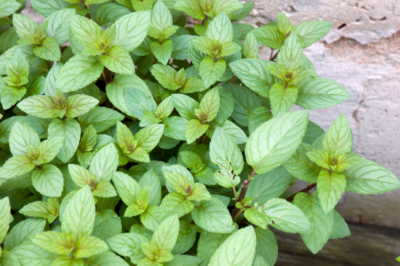Their growth habit raises questions among amateur gardeners. Sometimes mint tirelessly thrives for many years, to unexpectedly appear in a distant place or not at all. So is it an annual or a perennial? Learn the answer here.

Perennial by nature – admittedly not unconditionally.
From a botanical point of view, mint belongs to the perennial, herbaceous labiates. This classification implies that the above-ground shoots wither in the fall. The underground roots and stolons overwinter deep in the soil to resprout the next spring. For hardy species, like field mint, this is a given. Sensitive cultivars, such as banana or pineapple mint, however, will freeze to death in harsh conditions. Here’s how to prevent it:
- cut back the dead shoots close to the ground in late autumn
- cover the planting site with leaf mould, coniferous twigs or straw
- place the mint in the pot in front of the south wall on wood or styrofoam
- wrap the plant pot with bubble wrap or jute
important to remember is to remove the winter shelter in time. As soon as temperatures permanently exceed the zero degree mark, there is a risk of rot and mold under a cover.
Watering mint in winter
Its trump card as a perennial plant mint can not play if it dies of thirst in the winter. This danger threatens when it freezes in bright sunshine, without a blanket of snow. Since the roots now have no access to water above or below ground, water them on a frost-free day.
Consistently curb the urge to spread – this is how to do it.
Their fact sheet reveals that mint can live up to 25 years. During this long stay in the garden, it spreads its vigorous runners to suddenly thrive far from its assigned location. Hobby gardeners who want to keep the reins in their green kingdom in hand, set limits to the invasion in this way:
- Plant mints in the bed with a root barrier as a matter of principle.
- Place young plants in the soil in a mortar bucket without soil
- alternatively, surround with a rhizome barrier made of sturdy geotextile
Tips & Tricks
On mints without a root barrier in the bed, the stolons should be cut off regularly with a spade. These rhizome parts are much too good to dispose of in the compost, as they are excellent for propagation. Simply plant them in the container or in the new location and a young plant will thrive.

